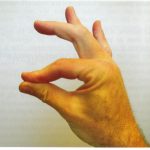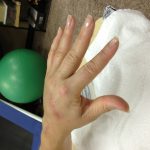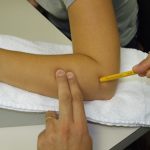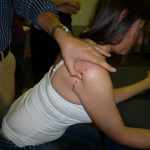Course Introduction:
Welcome, occupational therapists, physical therapists and certified hand therapists, to a transformative learning experience designed to elevate your clinical practice in the assessment, differential diagnosis, and treatment of upper extremity musculoskeletal disorders.
This comprehensive course is meticulously crafted to empower you with advanced knowledge and refined skills, enabling you to navigate the complexities of patient presentations with greater confidence and precision. In an ever-evolving healthcare landscape, the ability to perform a thorough assessment, arrive at an accurate differential diagnosis, and implement evidence-based, patient-centered treatment plans is paramount. This course will equip you to meet these demands head-on.
Why This Course?
The management of musculoskeletal disorders forms the cornerstone of hand therapy practice. However, in patients with non-specific diagnosis-like wrist or elbow pain, the nuances of distinguishing between similar pathologies, identifying underlying contributing factors, and selecting the most effective interventions require a sophisticated and continually evolving skill set. This course is designed to:
- Sharpen Your Assessment Prowess: Move beyond routine examinations to master advanced assessment techniques. Learn to systematically gather and interpret critical information, including subtle signs and symptoms, to form a comprehensive clinical picture.
- Refine Your Differential Diagnosis Capabilities: Develop a structured and evidence-informed approach to differentiate between conditions that mimic one another. Enhance your clinical reasoning to confidently identify the primary source of your patient’s complaints.
- Elevate Your Treatment Strategies: Gain proficiency in tailoring interventions to individual patient needs and optimizing outcomes.
- Foster Critical Thinking and Clinical Reasoning: Engage in challenging case studies and interactive discussions designed to stimulate critical thinking and refine your ability to solve complex clinical puzzles.
KEY SPEAKERS:
- Saba Kamal – OTR, CHT
- Ashim Bakshi – MHS, OTR, CHT
COURSE DURATION:
- 2 days
- 14 Hours Contact Session
Learner’s Objectives:
Upon successful completion of this course, the participants will be better equipped to:
- Demonstrate in-depth knowledge of upper extremity anatomy to accurately identify structures involved in common and complex clinical presentations.
- Conduct comprehensive and efficient musculoskeletal assessments of the upper quadrant including the use of cluster provocative tests.
- Formulate accurate differential diagnoses for common and complex musculoskeletal conditions of the upper quadrant with emphasis on the kinetic chain.
- Develop and implement targeted, evidence-based treatment plans.
- Demonstrate enhanced clinical decision-making in the most current research and clinical guidelines, ensuring that your practice is both effective and efficient Increase your confidence and competence in managing a diverse range of musculoskeletal disorders.
COURSE SCHEDULE
COURSE SCHEDULE
A Framework for Advanced Upper Extremity Practice: Integrated Assessment, Differential Diagnosis, and Evidence-Based Intervention
Day 1:
Session 1: Looking up
08:30 am – 09:00 am
- Introduction & Holistic Upper quadrant Assessment
- Overview of postural evaluation and global upper extremity screening
- Establishing clinical reasoning for regional interdependence
09:00 – 10:30am
The shoulder dilemma
- Understanding rotator cuff related shoulder pain (RCRSP)
- Functional anatomy and etiology
- Assessment and interventional strategies for the hand therapist
- Relevance of kinetic chain in distal pathologies
10:30 am – 12:30 pm
Proximal considerations of nerve compression syndromes
- Thoracic outlet Syndrome / brachial plexus compression
- Cervical screen
- Etiology, assessment and intervention
- Neurodynamics and manual therapy
- Relevance to distal neural compression
12:30 pm 1:30 pm – Lunch Break
Session 2: Looking downstream
1:30 pm – 3:30 pm
Elbow and forearm and wrist considerations
- Lateral elbow pathology
- Conditions; differential diagnosis, intervention
- Medial elbow pathology
- Conditions; differential diagnosis, intervention
- Neural entrapments – understanding neural continuity and distal symptoms comparing elbow Vs Wrist involvements
3:30 pm – 5:30 pm
Hand conditions
Kinematics of common hand injuries: Mallet finger, Swan Neck, Boutonnière, Jersey Finger, UCL/RCL tears, sagittal band injuries
Differential diagnosis strategies and appropriate therapeutic approaches
Day 2
8:00 am – 10:00 am
Wrist Pathology and Intervention
- Anatomy and mechanics of the wrist
- Instabilities, tendinopathies, and ligamentous injuries (e.g., TFCC, DRUJ involvement)
- Diagnostic challenges and evidence-based treatment planning
10:00 am – 12:30 pm
Session 3 – Bringing it all together
- Case Studies & Clinical Application
- Small group case presentations
- Group discussion and problem-solving session
12:30 pm – Adjourn
TESTIMONIALS
- Thank you for a fantastic course and subsequent upgrade in my hands on practice since returning. What a great course. i wish I could take it again to absorb more. It has changed how I mentally process what I hear from the patients. I have always listened and documented carefully what they say thinking that it may come in to play later. now I can use most of it immediately (when paired with the testing) to fine tune treatment. Best wishes to both of you, I hope to see more courses offered by you.- L. Hoffman
- Thanks for all your efforts this past weekend. It was a great course. My head is still spinning from all the info. S.Moss




